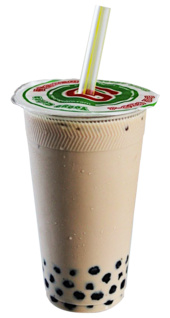**Bubble Tea Overview**:
– Description of bubble tea varieties: teas without milk and milk teas with different bases.
– Ingredients in milk teas: powdered or fresh milk, condensed milk, almond milk, soy milk, or coconut milk.
– Origin of bubble tea mix: Taiwanese black tea, tapioca pearls, condensed milk, and syrup.
– Packaging options: plastic cups, bottles, or plastic bags.
– Tapioca pearls made from cassava starch during Japanese colonial rule in Taiwan.
**Bubble Tea Variants and Preparation**:
– Bubble tea variations: black, green, oolong, and white tea, yuenyeung, blended tea drinks, and boba ice cream bars.
– Popular flavors and toppings: taro, mango, coffee, coconut, tapioca pearls, jelly, azuki bean paste, popping boba, milk or cheese foam.
– Customizable ice and sugar levels.
– Brewing techniques for different teas at specific temperatures.
– Tapioca pearls made from tapioca starch, stored uncooked for months.
**Bubble Tea History and Popularity**:
– Historical background: milk and sugar addition to tea in Taiwan during Dutch colonization.
– Competing stories of bubble tea’s discovery.
– Popularity growth in the 1990s across East and Southeast Asia.
– Major global bubble tea chains: Chatime, CoCo Fresh Tea & Juice, Gong Cha.
– Market size: $2.4 billion in 2022, projected to reach $4.3 billion by 2027.
**Bubble Tea in Different Regions**:
– Taiwan: National Bubble Tea Day, proposed passport cover design.
– Hong Kong: Traditional milk tea, introduction of Taiwanese bubble tea chains.
– Mainland China: Increasing popularity, surpassing coffee consumption.
– Japan: Introduction in the late 1990s, popularity growth in the 2010s.
– Singapore: Initial popularity, revival by Taiwanese chains, social media impact.
**Bubble Tea Culture and Impact**:
– Cultural significance: symbol of Asian identity and youth culture.
– Influence on Taiwan’s soft power and Taiwanese identity.
– Health concerns: high sugar content, caloric variations, moderation recommended.
– Supply chain challenges: global shipping delays, shortages of key ingredients.
– Social media role in driving popularity, diverse customer base, and evolving trends.
Bubble tea (also known as pearl milk tea, bubble milk tea, tapioca milk tea, boba tea, or boba; Chinese: 珍珠奶茶; pinyin: zhēnzhū nǎichá, 波霸奶茶; bōbà nǎichá) is a tea-based drink that originated in Taiwan in the early 1980s. Taiwanese immigrants brought it to the United States in the 1990s, initially in California through regions including Los Angeles County, but the drink has also spread to other countries where there is a large East Asian diaspora population.
 A cup of bubble tea | |
| Alternative names | Boba Pearl milk tea Boba milk tea Boba tea Boba nai cha Tapioca tea |
|---|---|
| Course | Drink |
| Place of origin | Taiwan |
| Region or state | Worldwide |
| Serving temperature | Hot or Cold |
| Main ingredients | Tapioca, milk, creamer, brewed tea, sugar, flavorings |
Bubble tea most commonly consists of tea accompanied by chewy tapioca balls ("boba" or "pearls"), but it can be made with other toppings as well, such as grass jelly, aloe vera, red bean, and popping boba. It has many varieties and flavors, but the two most popular varieties are pearl black milk tea and pearl green milk tea ("pearl" for the tapioca balls at the bottom).
